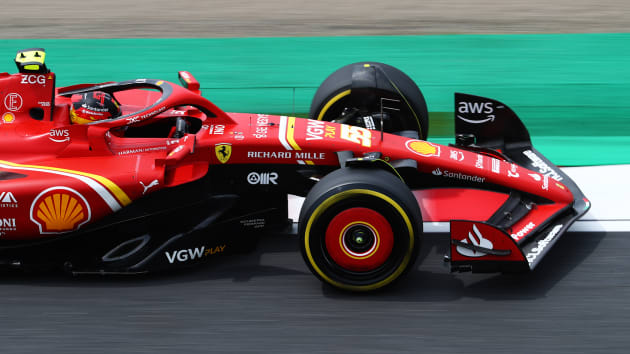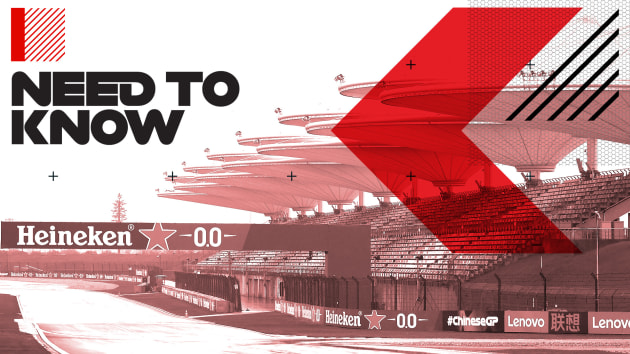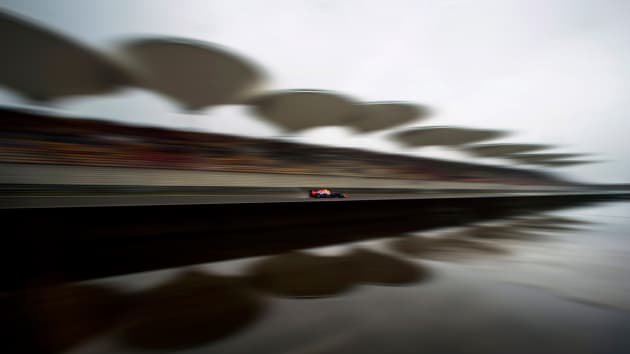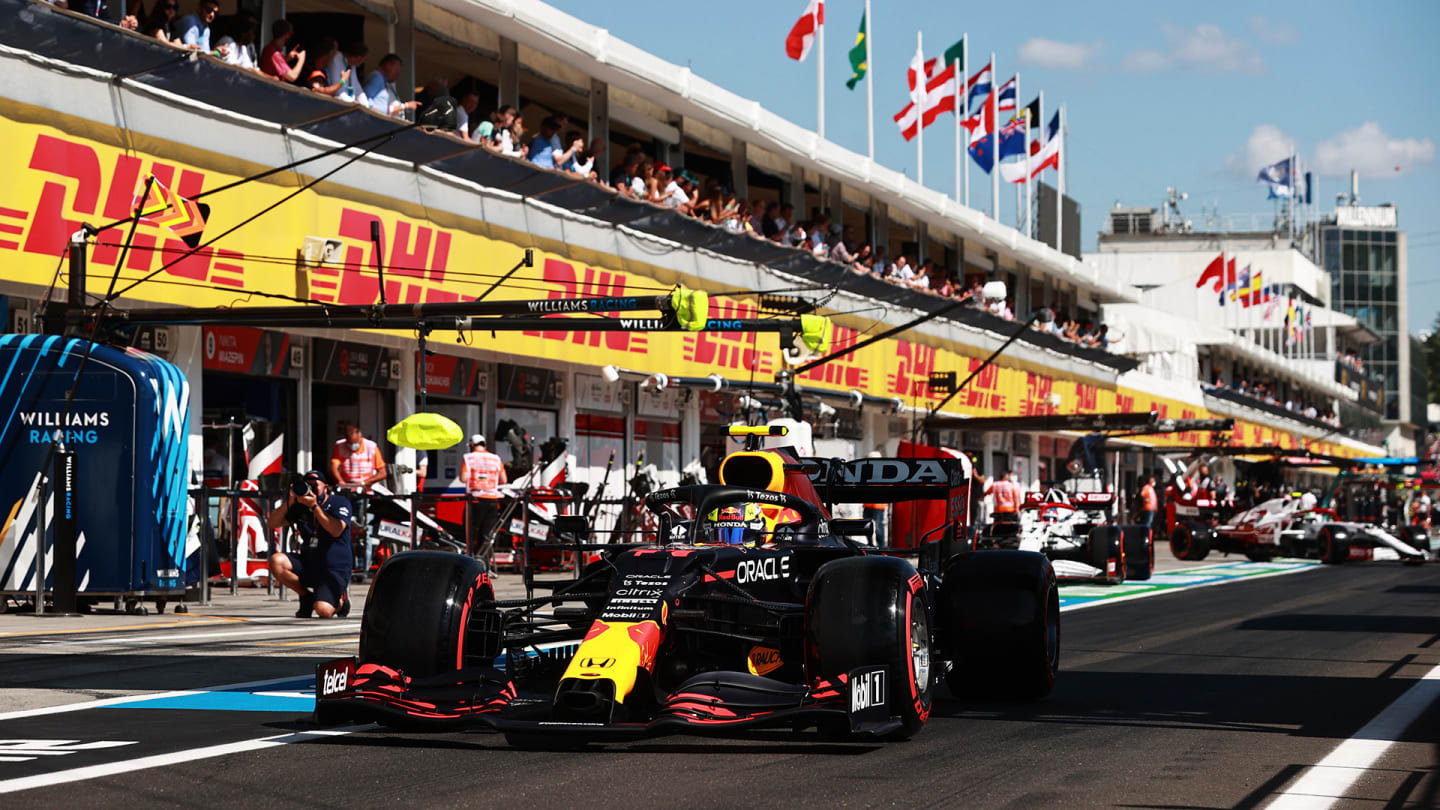
Feature
STRATEGY GUIDE: What are the possible race strategies for the Hungarian Grand Prix?

Special Contributor
Chris MedlandShare

After the Sprint weekend saw a different strategic approach at Silverstone, let's take a look at the various options available to the teams ahead of today’s race at the Hungaroring.
What are the likely strategies for the frontrunners?
In a slightly unexpected twist to the end of Q2, we ended up with just one team going its own way to start on the medium compound, and that turned out to be the front row as Mercedes committed to the C3s while Red Bull and the rest of the top ten went for the soft C4.
Max Verstappen could have gone for another run on mediums after a solid first attempt but instead opted for softs and improved, meaning the second row - also featuring Sergio Perez - will start on the softer compound.
There could be a slight gain off the line that makes that a smart choice when it comes to the long run down to Turn 1, at which point track position will be key to which strategy works out best. For Mercedes, a one-stop is possible with a pit window between Lap 28 and 35, although given the tyres they have available an earlier stop could be followed by a second stint on mediums and final stint on softs if required to switch to a two-stop.
For Red Bull, a two-stop is a near-certainty, but it depends on how long they can extend the first stint on softs. Get into the lead and they can probably manage the pace more easily to reduce thermal degradation and extend towards lap 25, switching to hards and trying to get to the end of the race. If the first stop needs to be closer to the lap 20 mark, then a second stint on hards and final stint on mediums - with a large pit window - is a strong option.
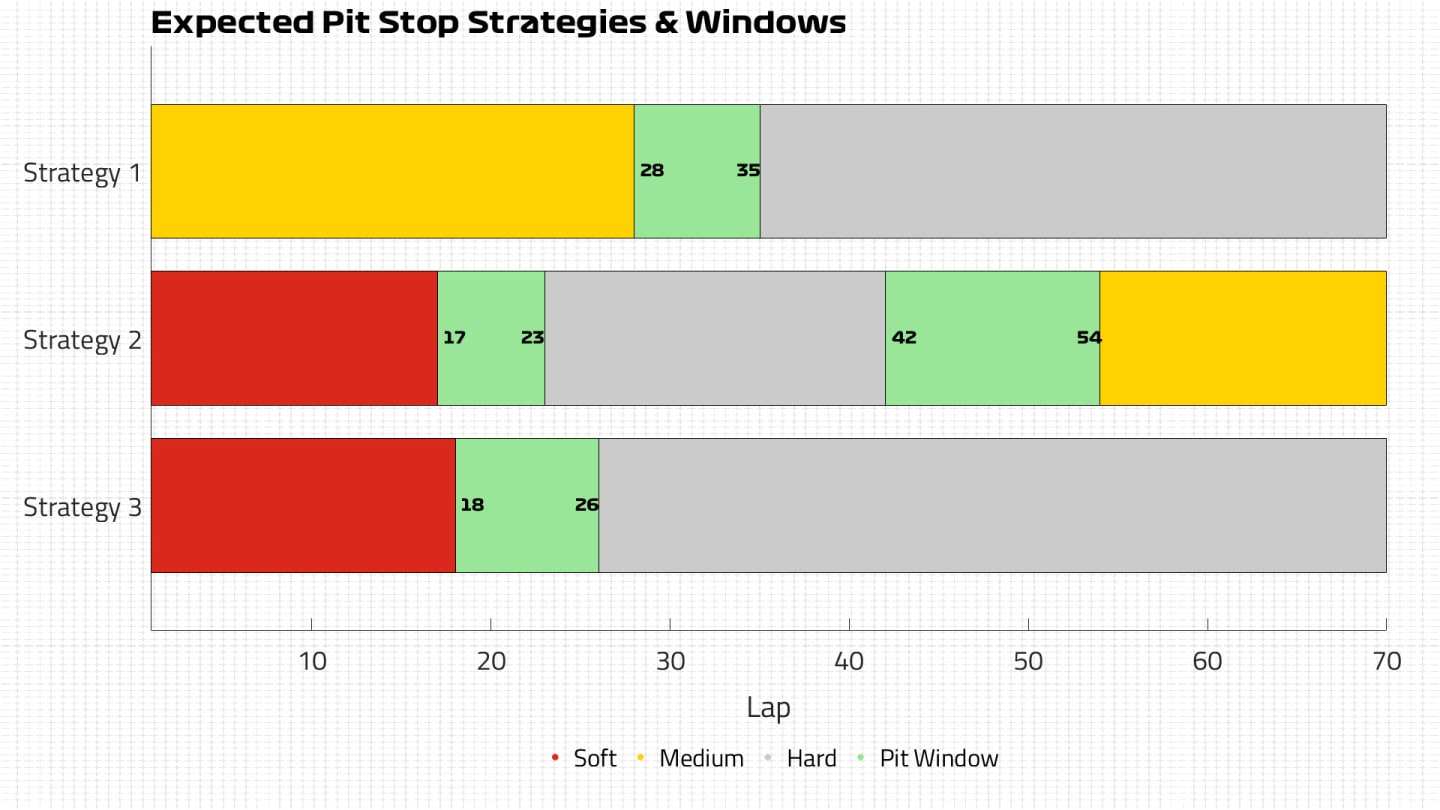
How about the rest of the top 10?
For those behind Mercedes and Red Bull, the remaining six drivers are all starting on softs and so have the likely two-stop strategy mentioned above. For all of them, they have one new set of mediums and new set of hards, so pitting anytime between Lap 17 and 23 would see a switch to hards, with a final stint on the new mediums.
But if any of them want to try something different, they could run the mediums in the middle stint, especially if they managed to extend the first stint longer than lap 23. Then returning to the softs for the final stint from lap 50 onwards is a real option, especially as the fuel load burns off and so the car becomes that little bit more easy on its tyres.
QUALIFYING REPORT: Hamilton roars to Hungary pole, as Bottas denies Verstappen front-row start
That approach is more likely to be attempted by switching to hard compound for the second stint, however, leaving the potential to go for either mediums or softs in the final stint, or making the one-stop strategy work.
With multiple options, track position will be the key consideration for those behind the top four, as pitting and coming out in traffic could prove very costly on a track that is difficult to overtake on.
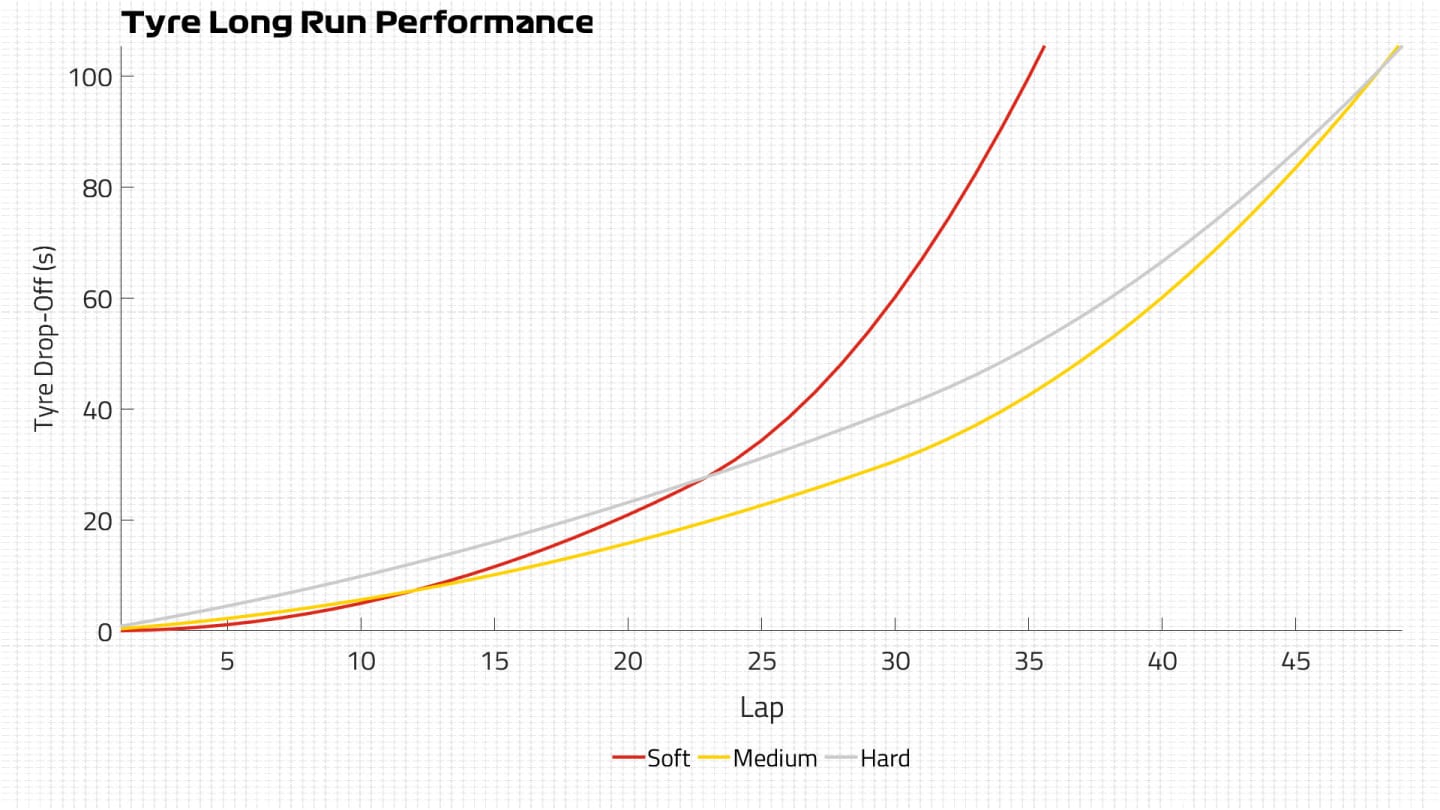
What are the options for the bottom half of the field?
Outside of the top ten, there’s a free tyre choice and the medium compound is the clear favourite to start on. Quite simply it opens up even more options, with the potential to do the one-stop as outlined for Mercedes, or a variety of two-stops.
The quickest two-stop involves all three tyre compounds, with hards used for the middle stint and softs at the end, but starting on the mediums would also allow strategists to take a look at how the softs behave on those starting in the top ten. If they perform better than expected and last for more than 20 laps, then it’s conceivable those outside the top ten - the majority holding multiple new sets of softs - could do the second and third stints on the softest compound.
Starting on softs would be a gamble and almost certainly commit a team to a two-stop, but so too would be starting on the hard as the performance deficit is close to a second compared to the softer compound, meaning they would lose out a lot in the first stage of the race. That said, for those at the back then starting on the hards could be an option with a long first stint, as a driver could aim to pick up further places as others pit ahead of them and then hope for a well-timed Safety Car.
That possibility certainly can’t be discounted, with a greater than 50% chance of a Safety Car, which would provide a gain of eight seconds compared to pitting under green flag conditions.
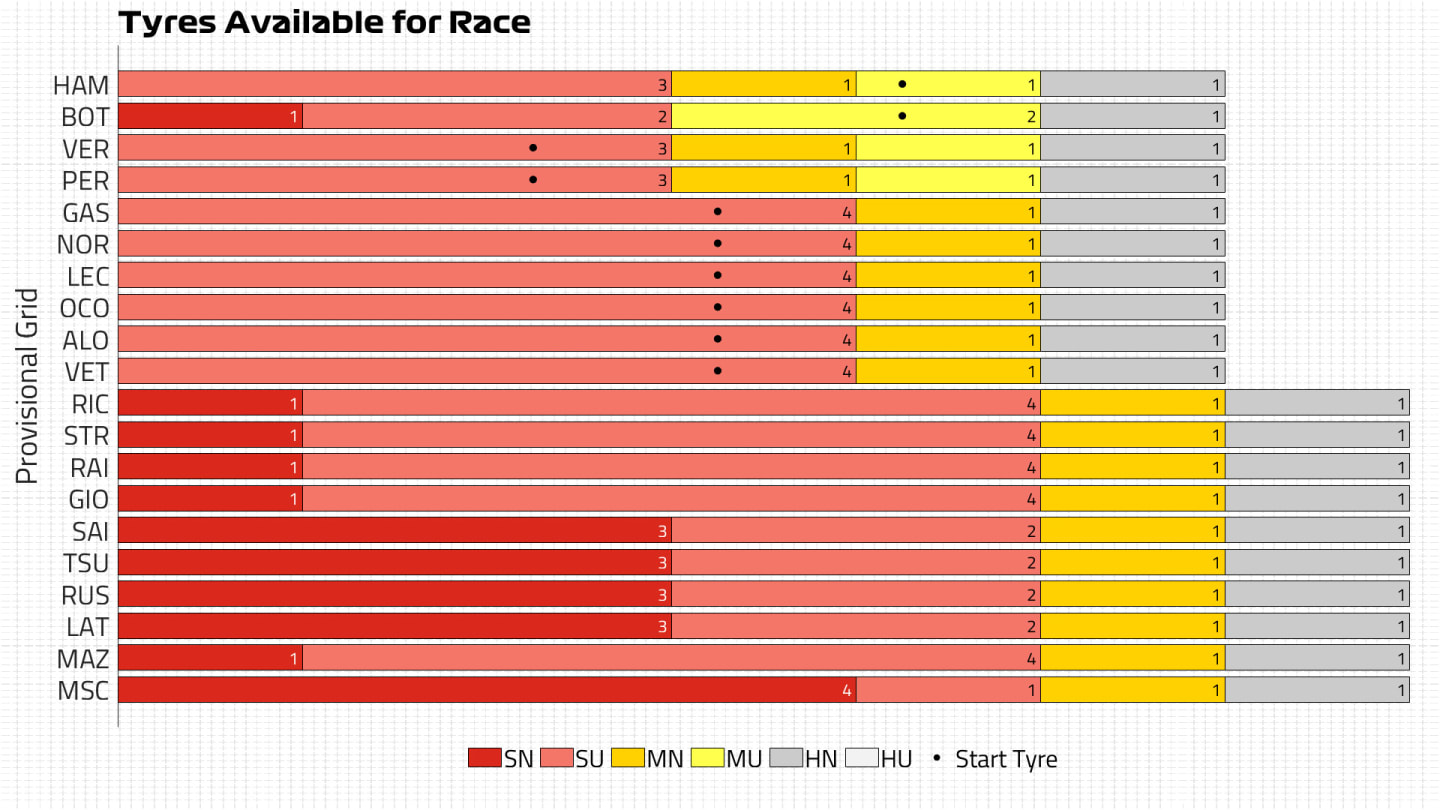
Wait, but what’s the weather doing?
There has been a threat of rain for much of the weekend but as has become traditional in many races this season it appears to be receding the longer the event goes on.
Officially there is a 40% chance of rain for the race at present, but thunderstorms are the threat so it could change quickly. Whether it is wet or dry, it is definitely going to be tricky.
That’s because the forecast is for high temperatures to continue, with temperatures close to 35C on Sunday afternoon. That would push the track temperature up above the 60C mark again, which makes it really tough to stop the tyres from overheating and sliding on the surface.
The medium and hard compound have been working well in the higher temperatures, so the hotter it is the better for anyone looking to run on those, but what it has also done is make the situation a bit easier in terms of management for drivers using softs.
In colder conditions last year there was a lot of graining on the soft compound, and that could be seen again if the temperature drops. However, while it stays hot then the soft only suffers from thermal degradation, so it comes down to how the driver manages the pace and temperatures, which is something that can be dealt with a little more easily in clear air.
YOU MIGHT ALSO LIKE
News What tyres will the teams and drivers have for the 2024 Chinese Grand Prix?
News Zhou hopeful points are ‘there to take’ at home race in China as Sprint format offers ‘two opportunities’
Feature NEED TO KNOW: The most important facts, stats and trivia ahead of the 2024 Chinese Grand Prix
News What is the weather forecast for the 2024 Chinese Grand Prix?

